Best of India Tours
- Golden Triangle Tour- Best of India & Nepal
- Classical Rajasthan
India Cultural Tours
- Images of North India- Karnataka Heritage
- Rajasthan & Goa Tour
Discover India Tours
- Grand India Tour- North to South India
- Central to South India
Rajasthan Tours
- Classical Rajasthan Tour- Golden Triangle Tour
- Grand Mughal Tour
India Luxury Trains
- Palace on Wheels- The Golden Chariot
- India Deccan Odyssey
- The Indian Maharaja
- Royal Rajasthan on Wheels
Nepal Tours
- Glimpses of Nepal- Buddhist Pilgrimage
- Nepal River Rafting
- Destinations of Nepal
- Nepal General Info
India Wildlife Tours
- North India Wild Life- South India Wildlife
Tibet Tours
- Tibet Monastery Tours- Explore Tibet
- Destinations of Tibet
Spa & Yoga Tours
- Ananda in Himalayas- Yoga & Meditation
Adventure Tours
- Manali Safari Tour- Himalayan Trekking
- Horse Safari
Hospet
Aihole
![]() Badami
Badami
![]() Bangalore
Bangalore
![]() Belur
Belur
![]() Bijapur
Bijapur
![]() Coorg
Coorg
![]() Halebid
Halebid
![]() Hampi
Hampi
![]() Hassan
Hassan
![]() Hospet
Hospet
![]() Mysore
Mysore
![]() Nagarhole
Nagarhole
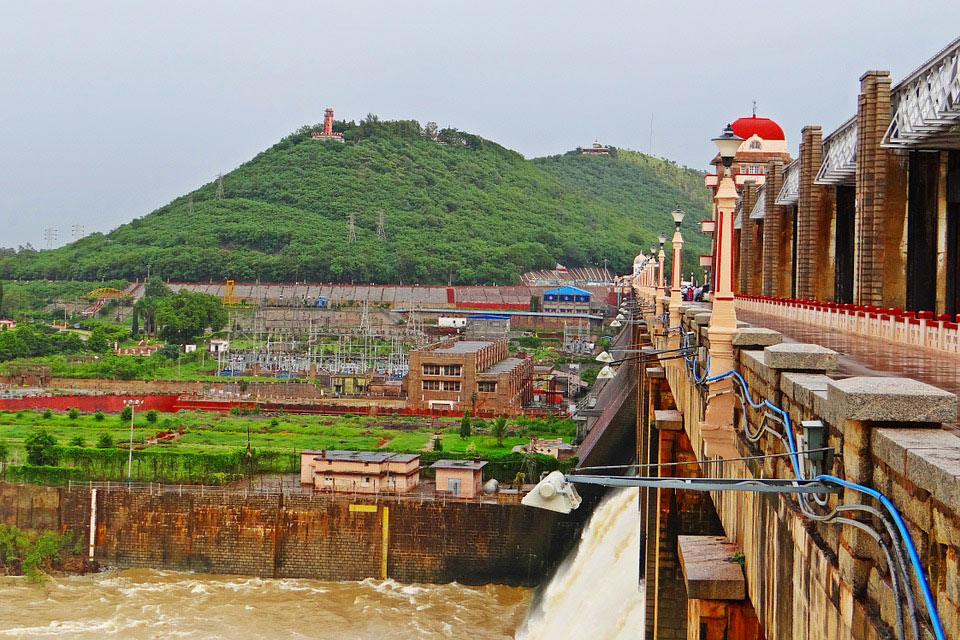
Hospet, a small dusty town in Northern Karnataka, was once the seat of the powerful Vijayanagar Empire. Though the town does not have much to offer the visitors, its importance lies in its nearness to Hampi, the erstwhile capital of the Vijayanagar rulers. There was a time when Hampi was the epitome of architectural wonders. Most of the great buildings of this place are now in ruins, though UNESCO and the Archaeological Survey of India have tried their best to recreate the original charm of the place. Hospet is the ideal base for tourists visiting Hampi and other nearby places.
Sightseeing
The artisans of the Vijayanagar Empire perfected the art of blending their architectural style with the rocky terrain of the region. The excavations at Hampi carried out by the Archaeological Survey of India in collaboration with the Karnataka Government in 1976 have revealed the ruins of a rich and flourishing empire. Today the ruins lie sprawled over a large area of 26 square kilometres. Of the other attractions, the Chitradurga Fort (290 km) situated at the foothills of a group of granite hills is worth visiting.
Excursions
A little away from Hospet lies the Tungabhadra Dam (6 km), which was completed in 1953 to provide electricity for irrigation in the surrounding districts. It is a major picnic spot today with a deer park, aviary, and ornamental gardens.
Excursions for Hospet
Chitradurga Fort
The fort is situated at Chitradurga around 290 km south of Hospet on the Bangalore-Hospet road. Also known as the Fort of Seven Rounds, it was built in the 17th century by the Nayak Poligars, the wealthy semi-independent landlords who fled south after the collapse of the Vijayanagar Empire in 1565. Haider Ali later crushed the Poligars and captured the fort. He replaced the mud fort with stone and later his son Tipu Sultan built a palace, granaries, oil pits, and a mosque in it.

Hampi
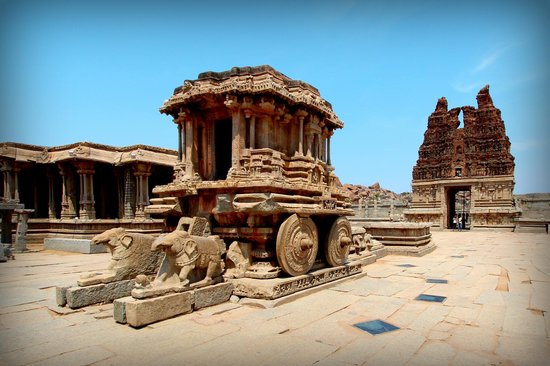
Hampi is a world Heritage Site and the erstwhile capital of the Hindu kingdom of Vijayanagar. A living testimony to the greatness of a bygone era, this ruined town is guarded by rivers and granite ridges. The travellers from Europe who visited the place at the height of Vijayanagar Empire wrote that the city was as large and as beautiful as Rome and hesitated to describe its grandeur for fear of it being thought fabulous. Most of the tourist centres in Hampi can be divided under two broad regions, the Hampi Bazaar area and the Royal Centre.
Queen's Bath
This 15-metre square bath is encircled is enclosed with gallery, verandas and overhanging Rajasthani balconies. The minor waterfall inside the bath was once poured with cool, perfumed water that flowed out through an underground drain. Open to sky and carefully shielded on all sides, the bath was a celebration of relaxed and opulent life which was also the leitmotif of Hampi.
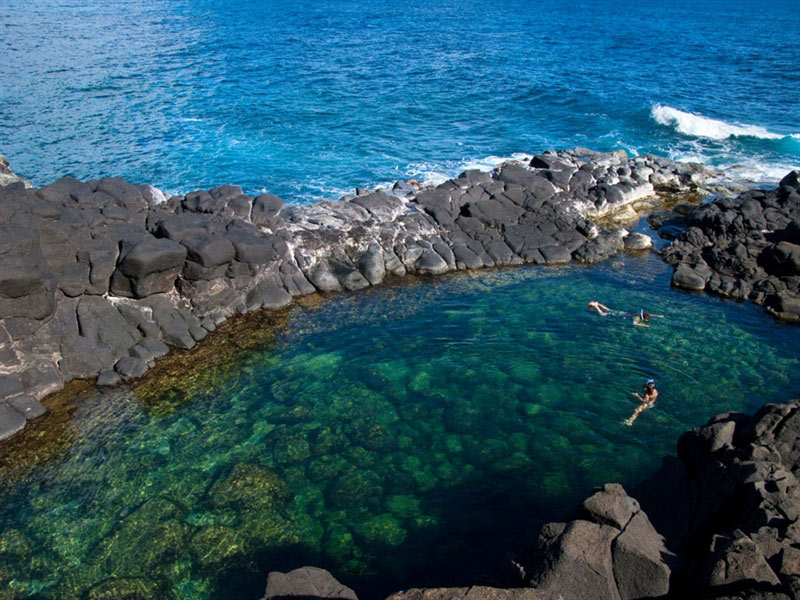
Vithala Temple
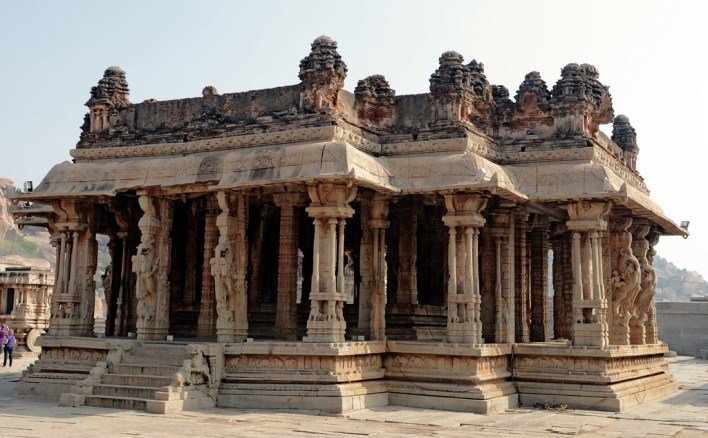
A World Heritage Site, the temple is located 2 km east of Hampi Bazaar. It was built in the 16th century and displays the architectural splendour acquired by the artisans of Vijayanagar Empire. There are beautiful carvings on the walls of the temple and its columns are so balanced that they have musical qualities.
Raghunath Temple
Located on a hilltop, the Raghunath Temple is known for its Dravidian style, excellent views from the rock above at sunset, and tranquil environment.
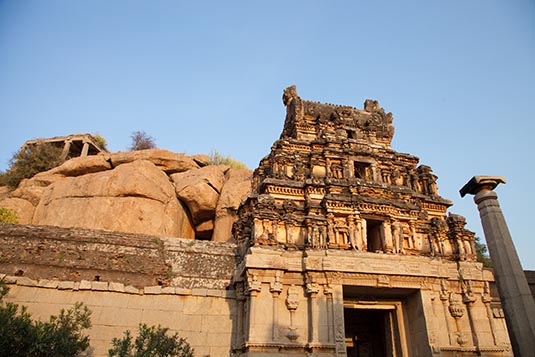
Virupakshat Temple
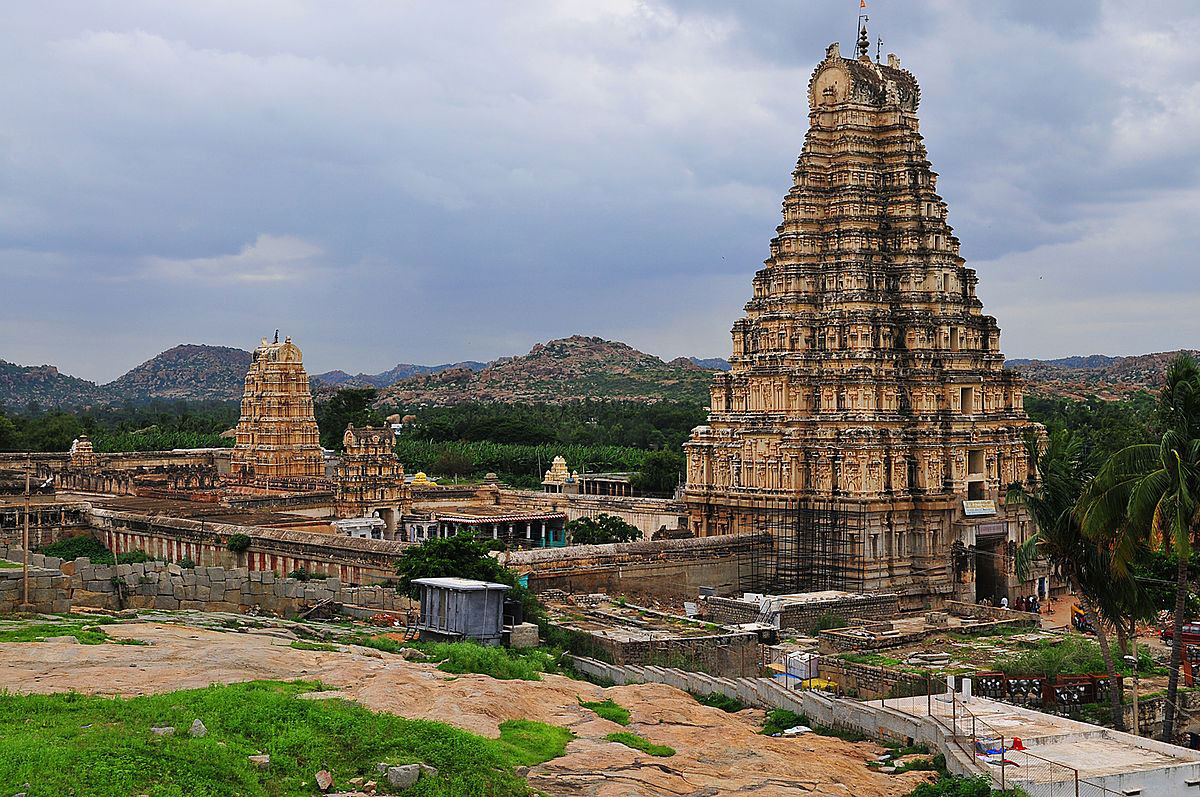
One of the oldest monuments in the town, this 15th-century Virupaksha Temple is part of the Hampi Bazaar area. The principal deity is Virupaksha, one of the many forms of Lord Shiva. Rising to a height of 50 metres from the ground, the temple belongs to the later Vijayanagar period, though many shrines inside the temple are much older. Most of the stone carvings are larger than life in size, as for instance the Nandi on the eastern end and Ganesha on southern end. There is also a 6.7-metre-high image of Narasimha, the half-man and half-lion incarnation of Lord Vishnu, as well as a huge lingam, the phallic symbol of Lord Shiva with its base in water.
King's Balance
Situated near the Vithala Temple, the King’s Balance has a golden past. According to legend, this balance was used to weigh the rulers against gold, jewels, and food that were later distributed to the Brahmins.
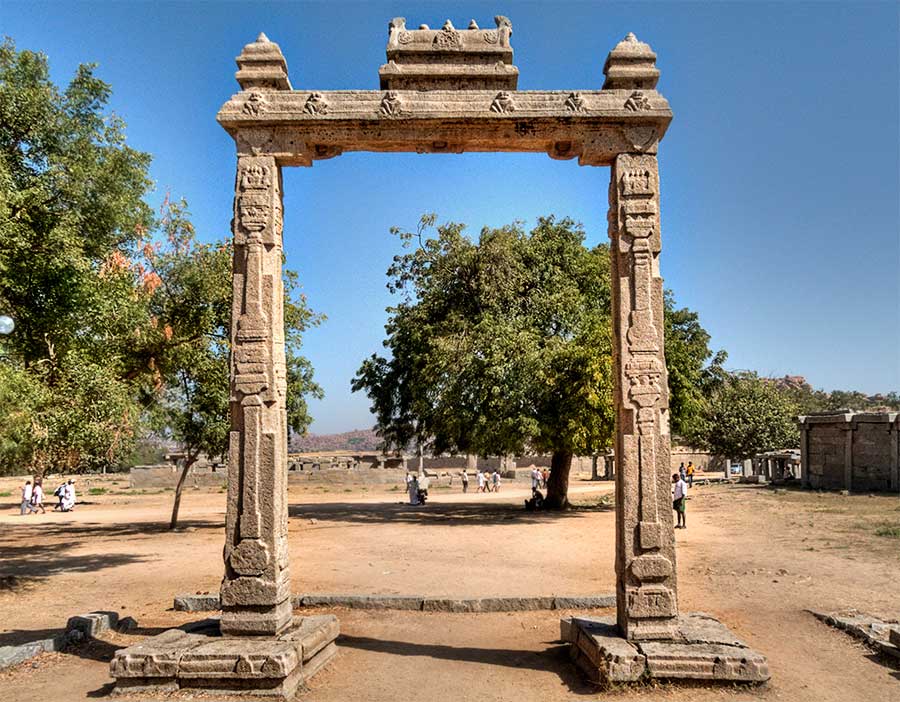
Achyutraya Temple
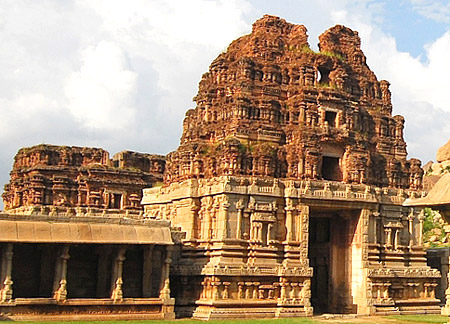
It is a large temple complex dedicated to Lord Vishnu, whose image has been shown in a reclining position on the coils of a snake (Sheshnag).
Lotus Mahal
The Lotus Mahal is an exquisite pavilion located in the walled area of zenana near Hazara Ram Temple. The pavilion derives its name from the lotus bud that is carved on its dome and vaulted ceiling. A fine blend of Indo-Islamic architecture, it was used by the women of the royal family living in the Queen\’s Palace to disport themselves in the water pavilion within their protected enclosure. The structure is later became a model for Mughal monuments in Agra with some modifications.
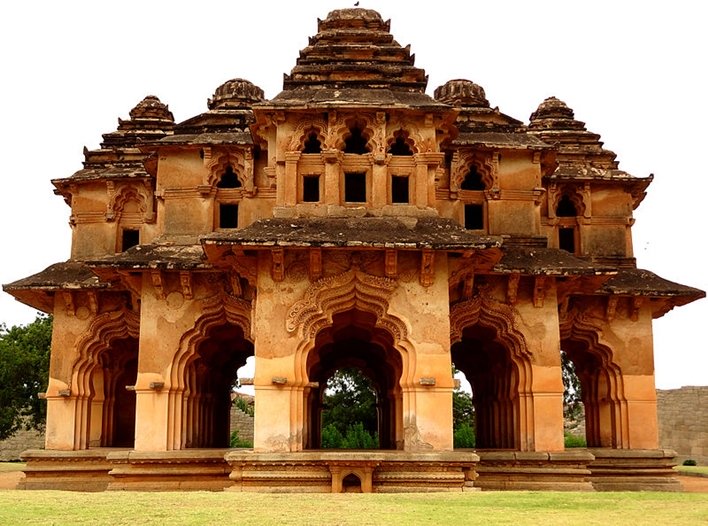
Royal Residence
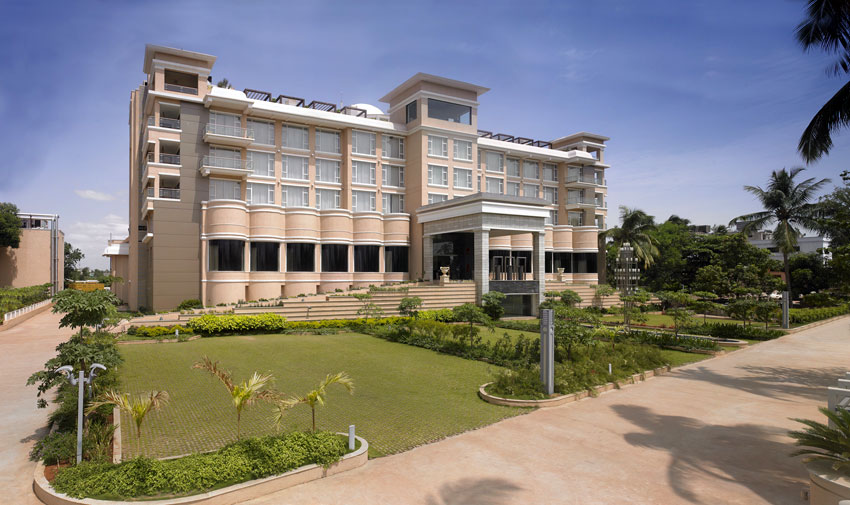
Situated to the west of the Hazara Rama Temple, the Royal Residence has been unearthed from recent excavations. Not much can be seen of the original residence which once displayed the typical architectural style of Vijayanagar with the sequence of rising levels in a \’U\’ formation with the private chambers on the top. Some stone basements, walls, and plaster floors are all that remain today.
Museum & Art Gallery
The museum run by the Archaeological Survey of India has a very good collection of sculptures belonging to the Vijayanagar Empire. It is situated at Kamalapuram, a small village near Hampi.
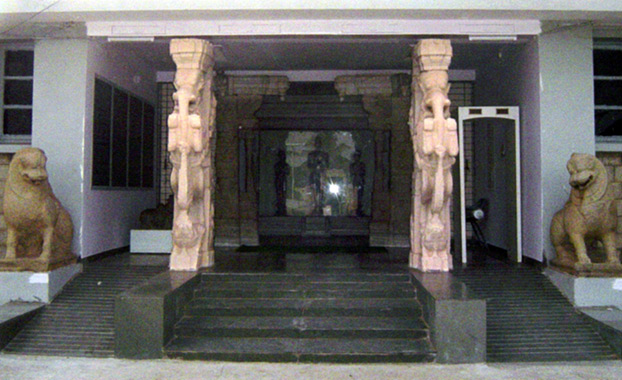
Banerghatta National Park

Another natural retreat to visit in Bangalore is the Banerghatta National Park. Situated at a distance of approximately 11 kilometres from Bangalore, the park houses some of the exotic species of flora and fauna. If interested, you can also explore the nearby temples here. The Banerghatta National Park is also a birdwatcher/’s paradise for it has more than a thousand species of birds in it
Vijayanagar Empire
Founded by the legendary brother princes Harihara and Bukka in 1336, the Vijayanagar Empire was once the mightiest kingdom of the South. It looks quite strange that a kingdom can perfect the art of building construction while fighting throughout their reign. The empire reached its height during the reign of Krishnadevraya (1509-29), a legendary king who controlled the entire peninsula south of Krishna and Tungabhadra Rivers, barring some area on the Malabar cost. The kingdom had a continued source of income from the spice trade to the south. A confederacy of Deccan rulers including that of Bidar, Bijapur, Golconda, Ahmednagar, and Berar attacked Vijayanagar in 1565 leading to the sudden end of this mighty empire.

Tungabhadra Dam
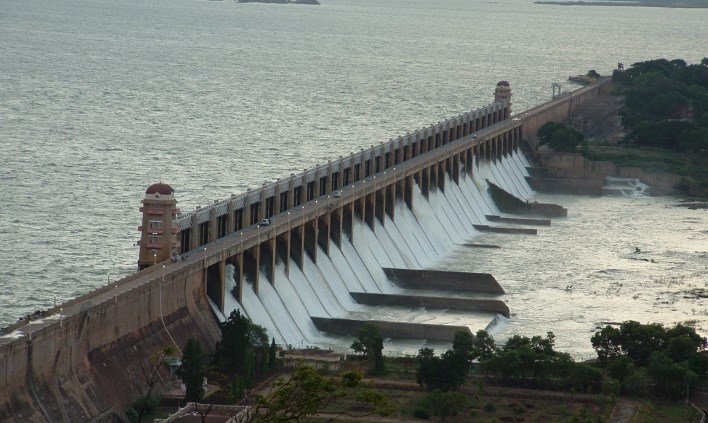
Situated at a distance of around 6 km from Hospet, the dam is 6 kilometres in length and 49 metres high. The dam offers panoramic views across the 80-km-long lake. It is also one of the largest masonry dams in India and took 8 years to complete.
Fact File
 Area: 159.10 sq. km
Area: 159.10 sq. km
 Population: 33,02,296
Population: 33,02,296
 Altitude: 920 metres above the sea level
Altitude: 920 metres above the sea level
 Best Time to Visit:All through the year
Best Time to Visit:All through the year
 Languages:Kannada, Tamil and English
Languages:Kannada, Tamil and English
 STD Code: 080
STD Code: 080
Click on the below links for Hampi
-
Cultural & Heritage Tour of Karnataka
Mumbai (Bombay) – Bangalore – Mysore – Hassan – Hospet - Hampi – Aihole – Pattadakal – Badami – Goa – Bombay
 Duration:(14 Days)
Duration:(14 Days) -
South India Panorama
Bombay - Madurai – Periyar – Kovolam – Alleppey - Cochin - Mysore – Hassan – Hospet - Hampi – Aihole – Pattadakal – Badami – Goa
 Duration:(20 Days)
Duration:(20 Days)




